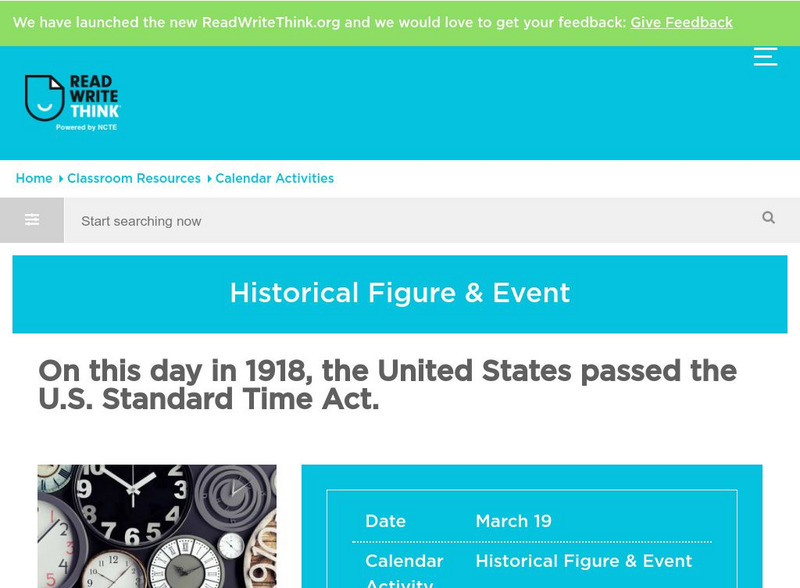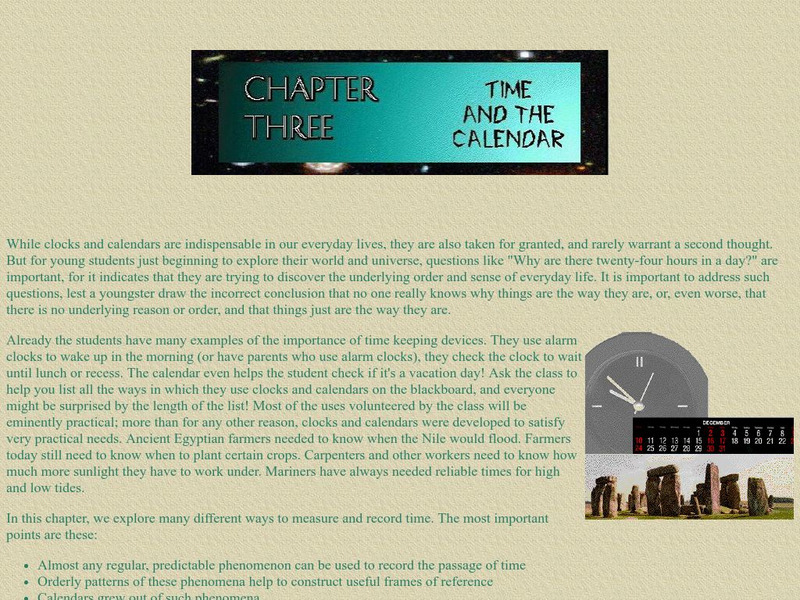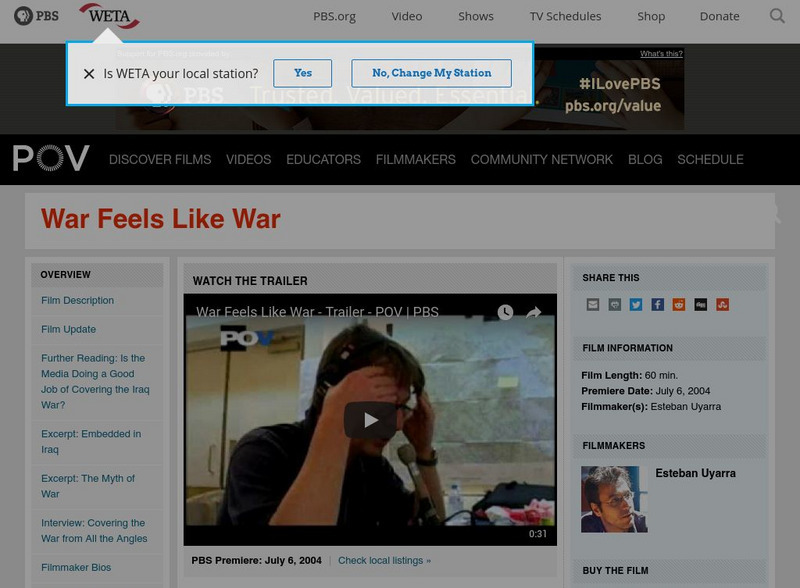Curated OER
Mapping My Community
Ninth graders are introduced to GPS technology. They complete fieldwork as they visit a specific area of their community to identify and map types of land use in the surveyed area. They use the collected data to create a digital map.
Curated OER
Barriers to Change: The Myths about Vehicle Idling
Students have the opportunity to confront some of the most common misconceptions that surround vehicle idling, and employ the concept of social marketing to initiate change. The goal is to give students an appreciation of the impact of...
Curated OER
Who Invented It? When? Chinese Inventions: An Introductory Activity
Students use Robert Temple's "The Genius of Chins: 3,000 Years of Science, Discovery and Invention", to understand how much the Chinese have contributed with their scientific and technological ability.
Curated OER
Bones and Muscles
Third graders are introduced to bones as the body's means of support and protection. They research bone facts and conduct an experiment with chicken bones. They identify and observe involuntary muscles at work.
Curated OER
Seed Selection for Genetic Variation
Students will research the origin of corn, analyze factors that contribute to shorter and longer growing seasons, and use the scientific method to answer the question: Did seed selection contribute to the successful movement of corn from...
Curated OER
Speedball
Learners work as a team in a game of Speedball. They are taught to value the benefits of physical activity as they investigate a new sport. Students successfully participate in a game of Speedball after participating in a drill that...
Curated OER
Electrical Engineers for a Day
High schoolers build a robot out of a 3-¿¿ inch floppy disk drive, two floppy disks, and some other miscellaneous supplies. They apply information they gather about electrical circuits from a web-based circuit design program.
Curated OER
Biological Sampling Device Using a Sea Perch
Pupils construct plankton nets to be towed and collect specimens to be examined and analyzed in the classroom. They develop research skills through collection of an aquatic sample. They write lab reports after interpreting, identifying...
Curated OER
What is an Estuary?
Students define the terms estuary and watershed. They conduct an experiment to determine the density differences between fresh and saltwater. They examine the salinity distribution of the Peconic Bay Estuary.
Curated OER
Dribbling Math
Students practice adding, subtracting and multiplying numbers while working on dribbling skills. They play the role of munchers and dribblers while adding, subtracting and multiplying numbers from a deck of cards.
Curated OER
Geese and Sandhill Cranes of Nebraska
Young scholars gather information on the geese and cranes found in Nebraska. Students explore ways they can help save their habitats. Also, young scholars use additional general information they connect artwork to their research topic.
Curated OER
Making a Food Web and Learning About Ecosystems
Third graders examine the difference between a food web and food chain. They also examine the importance of the sun in a food web and food chain. Students understand what happens when you remove parts of the chain.
Curated OER
Treasure Hunt Region
Students are introduced to new geography related vocabulary words. In groups, they focus on a different region of the school and develop a new name for it. They create a treasure map for another group to use in the region of the school...
ReadWriteThink
Read Write Think: On This Day in 1918, the u.s. Passed the u.s. Standard Time Act
A classroom activity commemorating the 1918 Standard Time Act and aiding students in learning about differing time zones. Includes lesson plans, web links and an annotated bibliography. From March 19, 2007.
TED Talks
Ted: Ted Ed: How Did Trains Standardize Time in the United States?
This animated video explains the relationship between time zones and trains. If you live in the United States, you live in one of the standardized time zones. But these time zones have not always been around. In fact, it's a fairly...
Harvard University
Harvard Smithsonian Center for Astrophysics: Time and the Calendar
This lesson helps students discover the importance of time and the calendar, and how they each bring order to life. Each activity is designed for students understand the passage of time, how to keep time, international time zones,...
PBS
Pbs Teachers: Time Travel
Use this NOVA lesson to discuss the nature of time and the grandfather paradox. Examine time from different perspectives by plotting ages on a timeline, estimating how long a minute is and imagining going back in time to change something...
Harvard University
Harvard Smithsonian: Everyday Classroom Tools
The focus of this series of lessons is to engage students in an exploration of the world around them. The emphasis is on inquiry as students learn about the earth, sun, light, shapes and more.
PBS
Pbs Teachers: War Feels Like War: Journalism in War Time (Teacher Resources)
Assess a lesson plan that revolves around the role of journalists in a democracy, especially considering the challenges and ethics of reporting from a war zone. Should broaden student understanding of Thomas Jefferson's ideal of an...
Other popular searches
- Lessons on Time Zones
- Time Zone Lesson Maths
- Time Zone Lesson Australia
- Time Zone Lesson Plans
- Time Zones Lessons Free
- Us Time Zones Lessons




















